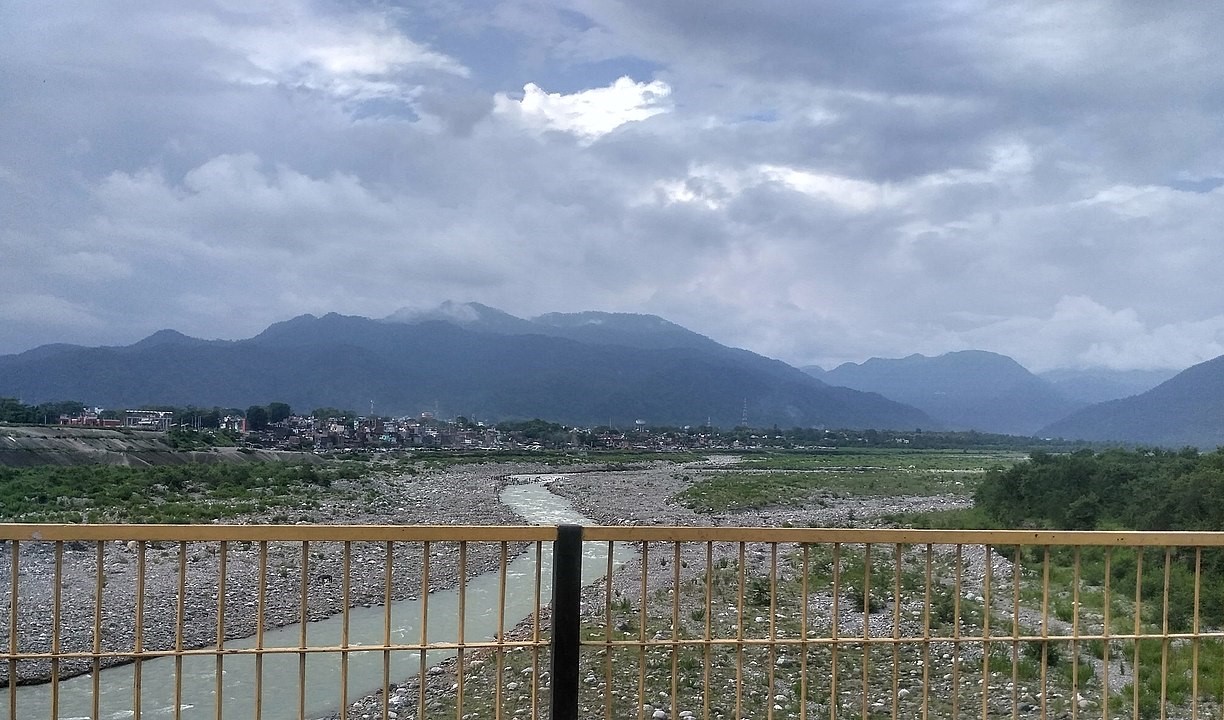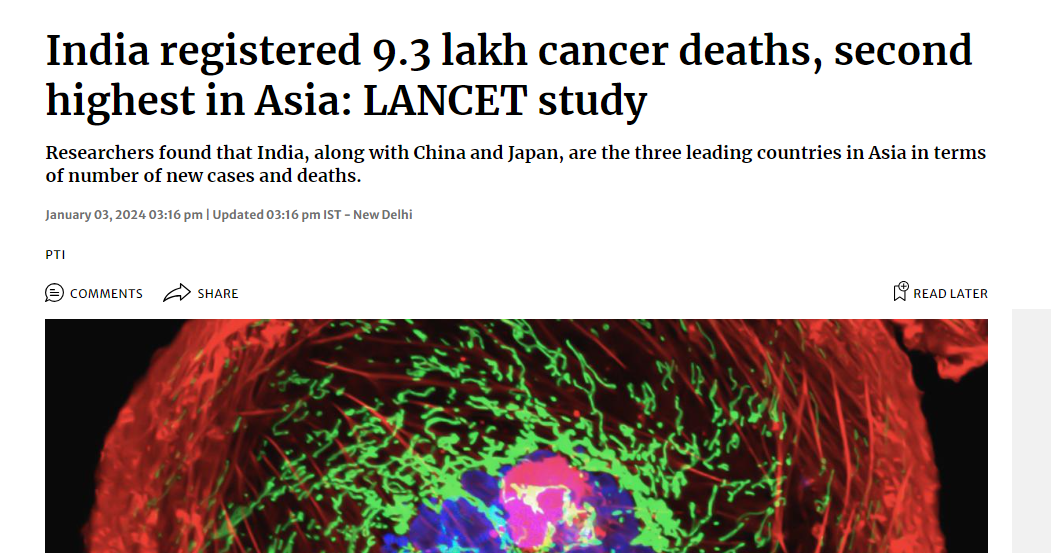Project ‘Devika’: North India’s First River Rejuvenation nears completion
Introduction:
The forthcoming inauguration of the ‘Devika’ river rejuvenation project, a pioneering initiative in North India, is on the horizon and is anticipated to be officiated by the Prime Minister.
About Project ‘Devika’:
- Commencement: Initiated in February 2019 by the Prime Minister, this project draws inspiration from the successful ‘Namami Ganga’ initiative.
- Origins of Demand: The impetus for the project, long sought after for its renovation and rejuvenation, gained traction post-2014, signifying a noteworthy advancement in the efforts for river revitalization in North India.
- Execution Oversight: The responsibility for the construction of the LWM project falls under the purview of the Urban Environmental Engineering Department (UEED) of Jammu and Kashmir.
- Cultural Significance: The Devika River, esteemed as the sister of the sacred Ganges, holds immense religious importance, especially in Udhampur, Jammu & Kashmir.
Key Features:
- Liquid Waste Management (LWM): An independent LWM initiative is being deployed to uphold the river’s sanctity, incorporating a network of pipes and manholes interconnecting households.
- Solid Waste Management (SWM): In conjunction with LWM, an SWM initiative plays a crucial role in safeguarding the sanctity of the river.
Infrastructure Advancements: The project encompasses the establishment of three sewage treatment plants, a 129.27 km sewerage network, the development of cremation ghats, protective fencing, landscaping, and the implementation of small hydropower and solar power plants.
Crucial Role of Karman Line in Space Defense Strategies
Introduction:
The Karman line, serving as the conceptual divide between Earth’s atmosphere and outer space, holds pivotal importance in the realms of space defense and satellite communications.
Exploring the Karman Line:
Positioned at an altitude of 100 kilometers above sea level, the Karman Line serves the essential purpose of delineating Earth’s atmosphere from the expansive reaches of space. While not universally embraced by all scientific communities and space exploration entities, the majority of nations and space organizations recognize this delineation. Formally instituted in the 1960s by the Federation Aeronautique Internationale (FAI), responsible for record-keeping, crossing the Karman Line officially designates an individual as an astronaut.
Potential Threats Arising from Karman Line Dominance:
Several potential threats loom over the control of the Karman Line:
- Anti-Satellite Weapons: Control over the Karman line could empower adversaries to deploy weapons targeting satellites, leading to disruptions in communication links.
- Jamming and Interference: Adversaries may employ systems to disrupt satellite communications, resulting in blackouts or degraded performance.
- Hacking and Cyber-attacks: Unauthorized access to satellite systems could lead to data breaches or manipulation of communication signals.
- Physical Interception or Tampering: Gaining physical access to satellites could allow adversaries to alter orbits, damage components, or eavesdrop on communications.
- Space Debris and Kinetic Kill Vehicles: Creating debris or deploying kinetic kill vehicles could disrupt satellite networks.
- Electromagnetic Pulse (EMP) Weapons: EMPs could damage satellite electronics, rendering them inoperable.
- Denial of Access to Space: Dominating the Karman line could empower adversaries to deny space access to certain countries or entities.
- Spoofing and Deception: Manipulating satellite communication signals could mislead or deceive users.
- Space-based Cyber-Physical Attacks: Combining cyber and physical methods could disrupt or manipulate satellite operations.
- Policy and Regulatory Challenges: Dominance may give rise to geopolitical challenges, affecting international agreements related to space activities.
Historical Context and Recent Developments:
- The V-2 missile breached the Karman line on June 20, 1944, marking a significant milestone in space exploration.
- Both the United States and the Soviet Union historically sought space dominance for military and reconnaissance purposes, resulting in the development of anti-satellite weapons and ballistic missiles.
India’s Evolving Space Program:
- India’s space program has shifted focus from development to incorporating space for national security objectives, responding to China’s counter-space capabilities.
- With a focus on self-reliance and situational awareness, India’s approach includes robust launch capabilities and military satellites.
Conclusion:
The strategic importance of the Karman line extends beyond scientific understanding to encompass critical defense strategies in space. To address multifaceted threats associated with dominating this boundary, nations must be vigilant, protect their space-based assets, and engage in international collaboration.
Future of Space Defense:
In an era where space is increasingly contested, understanding and securing the Karman line are vital for maintaining and defending capabilities in outer space.
Direct-to-Mobile (D2M) Technology in India
Introduction
The challenges associated with the implementation of direct-to-mobile (D2M) technology, enabling streaming of TV content to mobile phones without an internet connection, have been recognized by the Telecommunication Engineering Centre (TEC).
However, the proposal for D2M has encountered opposition from technology giants such as Qualcomm, Samsung, Ericsson, Nokia, and telecom operators.
About Direct-to-Mobile (D2M) Technology
- D2M technology involves transmitting content directly to mobile devices using broadcast signals.
- Key aspects of D2M technology include the utilization of broadcast networks, similar to those used for TV and radio, to deliver content directly to mobile devices, bypassing conventional cellular or internet data networks.
- This method is efficient for simultaneous delivery of content to numerous users, reducing strain on cellular networks and proving advantageous for live events or popular broadcasts.
- Mobile devices require specific hardware to receive and decode broadcast signals, potentially necessitating new standards in smartphone manufacturing.
- D2M can provide high-quality video and audio streaming, independent of the variable speed and stability of an internet connection.
Key Challenges Identified by TEC
- Integration Issues: Amalgamating smartphones with D2M and digital terrestrial TV to mobile devices (DTT2M) technologies poses a significant challenge.
- Infrastructure Requirements: Implementing technologies like Advanced Television Systems Committee (ATSC) 3.0 (NextGen TV) may require a new nationwide network for indoor coverage, adding complexity.
- Increased Costs: The adoption of D2M technology may result in elevated costs for smartphone manufacturers and, consequently, higher phone prices.
- Ecosystem and Viability Concerns: Challenges encompass the availability of a handset ecosystem, scalability, business viability, and spectrum requirements.
TEC’s Report and Consultation Findings
- Device Ecosystem: The success of adopting D2M technology depends on enabling services on mobile devices, especially smartphones or tablets, and establishing an open-market, cost-effective device ecosystem.
- Need for Compatible Standards: A standard compatible with existing mobile handsets is essential for cost-effectiveness and leveraging the existing ecosystem.
- Offloading Broadcasting Traffic: The standard should facilitate offloading broadcasting traffic over phones and guide the design and manufacture of smartphones for direct broadcast signal reception.
Government’s Intent and Potential Uses of D2M
- Convergence of Services: The government aims to explore the convergence of broadcasting and broadband services through D2M technology.
- Direct Broadcasting Benefits: Users could receive terrestrial digital TV content on handsets, akin to FM radio. The technology could also broadcast emergency alerts, public safety messages, and social services.
- Traffic Offloading: Telcos could offload video content to broadcasting networks, reducing network congestion.
Global Context and Trials
- Lack of Available Devices: Currently, no mobile devices support these broadcasting technologies or standards globally.
- International Trials: Countries like the USA, Brazil, Mexico, and Canada are conducting trials for D2M technology.
Stakeholder Concerns and Consultation Feedback
- Hasty Implementation Worries: Stakeholders have expressed concerns about the government’s rapid approach to implementing a technology still in its early stages.
- Telcos’ Revenue Concerns: Telecom operators are wary of potential revenue losses from their data business if mobiles pick up signals from D2M technology.
Conclusion
Critical Factors: The success of D2M in India will rely on the development of a device ecosystem and the ability to broadcast to a vast number of open-market mobile devices.
Navigating Implementation Challenges: Addressing the identified challenges and considering stakeholder concerns will be pivotal in determining the feasibility and success of D2M technology in India.
Cyber Kidnapping
Context:
- Recently, a Chinese student named Kai Zhuang was discovered safe in rural Utah after being a target of ‘cyber kidnapping.’
- He had been reported missing since December 28. By the time authorities located him unharmed, his parents in China had already paid $80,000 in ransom.
- Zhuang was found in a tent approximately 40 km north of Brigham City, where he appeared to have voluntarily isolated himself.
What is cyber kidnapping?
- Cyber kidnapping is a criminal act in which perpetrators manipulate the victim into hiding and then contact their family members, demanding a ransom.
- The victim is coerced into sending staged pictures suggesting they are being held captive.
- These images are then shared with the family, creating a false belief that harm will come to the victim unless the ransom is paid.
- Despite the kidnappers not being physically present, they monitor the victim online through video-call platforms. Virtual kidnapping, taking various forms, typically involves an extortion scheme that tricks victims into paying a ransom to secure the release of a loved one.
Unlike traditional kidnappings, virtual kidnappers do not physically abduct the victim. Instead, they use deception and threats to pressure victims into paying a ransom promptly before the scheme unravels.
There is concern that the advancement of Artificial Intelligence (AI) and machine learning could contribute to the increase of such crimes, as scammers might use technology to send voice notes mimicking the distressed loved one.
How to protect oneself?
It is advisable to exercise caution when receiving calls from unfamiliar numbers, as cybercriminals can manipulate caller IDs to appear as though they are calling from a known contact.
Scammers may also leverage information shared on social media to make their calls more convincing, underscoring the importance of being mindful about online information sharing. Additionally, it is wise to verify the well-being of loved ones before making any ransom payments.
LANCET REPORT ON CANCER
Cancer Burden in Asia: A 2019 Overview
In 2019, India secured the second position in terms of cancer burden in Asia, with 1.2 million new cases and 929,600 deaths, according to a study published in The Lancet Regional Health Southeast Asia journal.
Regional Disparities: Cancer Statistics in Asia
China led the continent with the highest cancer burden, reporting 4.8 million new cases and 2.7 million deaths, while Japan ranked third with 887,300 new cases and 437,700 deaths.
The prevalence of cancer emerges as a significant public health concern across Asia.
Top Five Cancers in Asian Countries
Across most Asian countries, prevalent cancers included tracheal, bronchus, and lung cancer (both sexes), breast cancer (among females), colon and rectum cancer (both sexes), stomach cancer (both sexes), and prostate cancer (among males).
Smokeless Tobacco Challenge in South Asia
- The study underscored the public health concern posed by smokeless tobacco in South Asian nations like India, Bangladesh, and Nepal.
- Products such as khaini, gutkha, betel quid, and paan masala contribute to this alarming trend.
India’s Anti-Tobacco Initiatives
- Adoption of WHO Framework Convention on Tobacco Control (WHO FCTC)
- India has taken proactive measures by adopting the tobacco control provisions outlined in the WHO Framework Convention on Tobacco Control (WHO FCTC).
Prohibition of Electronic Cigarettes Ordinance, 2019
Enacted to curb the rise of e-cigarettes, this ordinance prohibits the production, manufacture, import, export, transport, sale, distribution, storage, and advertisement of e-cigarettes.
National Tobacco Quitline Services (NTQLS)
The Government of India introduced NTQLS, a telephone-based service with the primary objective of providing information, advice, support, and referrals for tobacco cessation.
mCessation Programme: Leveraging Mobile Technology
Launched in 2016 as part of the government’s Digital India initiative, the mCessation Programme utilizes mobile technology to support tobacco cessation efforts, contributing to the nationwide fight against tobacco consumption.






